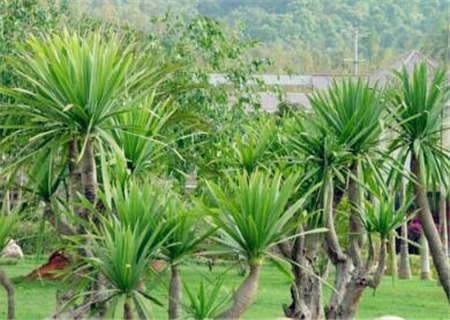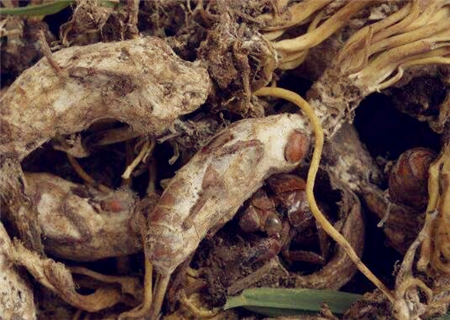How much does a citrus sapling cost at the moment? When to plant and blossom? What should be paid attention to in planting? mu
Citrus is a kind of fruit trees, which refers to oranges, oranges, grapefruit, oranges, etc., also known as wide-skinned oranges, tangerines, yellow oranges, red oranges, Dahongpao, big red tangerines. How much is the current price of citrus saplings? When will it be planted, blossom and bear fruit? What should be paid attention to in planting? How much is the yield per mu? I learned from Uncle Hu, a grower in Nanning, that the prices of different varieties of citrus are different, ranging from two yuan to more than ten yuan.

When will the citrus tree be planted, blossom and bear fruit?
Planting:
It is suitable to be planted in spring, generally in 3 / 4 /, and before orange bud germination.
Blossom and bear fruit:
Citrus flowers solitary or 2-3 fascicled; calyx irregularly 5-3-lobed; petals usually less than 1.5 cm long; stamens 20-25, style slender, stigma capitate. The flowering period is from April to May and the fruiting period is from October to December.
What should be paid attention to when planting citrus trees?
1. The seedlings should be treated, including eliminating curved root seedlings, unqualified seedlings, truncated long roots and injured roots. For long-distance transported seedlings, the roots should be soaked in clean water for about 2 hours before transplanting, and then covered with mud.
2. Transplanting should be vertical and horizontal as far as possible, which is beneficial to orchard management, ventilation and light transmission.
3. Seedlings should not be planted too deep or too shallow, which should be consistent with those in the nursery. Generally, the grafting interface is about 3-5 cm above the surface.
4. The root system should be arranged neatly when transplanting, and the root system can not be in direct contact with the base fertilizer applied.
5. When transplanting seedlings, it is necessary to tamp the soil, irrigate enough root water, and cover with plastic film to preserve water in arid areas.
6. The seedlings can not survive until about half a month after planting. If the soil is dry, once every 1-2 days, topdressing can be achieved after survival. Dilute liquid fertilizer should be applied frequently to promote the growth of roots and shoots.
7. The harm of citrus whole claw mite and the reason of its rampant occurrence:
Acaroid mites, nymph mites and young mites were used to suck the sap of citrus leaves, green shoots and fruits to destroy chloroplasts. The victim showed many small gray-white spots. In severe cases, the leaves and fruit surfaces were gray-white, and the leaves fell off early, resulting in fruit drop.
Spring and autumn are serious periods of the year. The rampant occurrence of harmful mites is the result of the comprehensive action of many factors. The mites themselves have strong fecundity. Citrus panclaw mites can also carry out bisexual reproduction and parthenogenesis. The offspring of parthenogenesis are male, which occur more than a year and have strong adaptability to the environment. This is the internal factor that is easy to cause rampancy. The rampant occurrence of mites is closely related to external conditions, such as climate, food and natural enemies, as well as side effects caused by pesticide control.
The effect of the drug:
The main results are as follows: 1. some insecticides not only have no killing effect on harmful mites, but can stimulate their proliferation, accelerate the development of harmful mites, increase the number of eggs, and kill a large number of natural enemies. Ex.: after the 1950s, organic synthetic insecticides DDT, parathion and so on were widely used.
2. Although spraying a large amount of broad-spectrum insecticides killed most of the spider mites, it also caused serious damage to the natural enemies, and the unkilled mites recovered rapidly in a short period of time when the climate was suitable, but the number of natural enemies was difficult to recover.
3. Mites are resistant to some pesticides. In particular, the continuous use of a large number of highly toxic organophosphorus pesticides, and blindly increasing the dose concentration and the frequency of drug use, not only can not control the harm of harmful mites, but also accelerate the emergence of drug resistance, so that it is difficult to control harmful mites when these pesticides are used again at present.
Therefore, we should strengthen insect surveillance, local use of drugs when locality occurs, reduce the number of spraying in the whole garden, rotate the use of pesticides, do not abuse pesticides, and avoid the emergence of drug resistance.
What is the yield of citrus trees per mu?
The yield per mu of citrus is based on variety; management; climate. It is determined by human factors, such as navel oranges, for example, the yield per mu in Jiangxi has been recorded at 10,000 jin, and the yield of navel oranges in Chongqing is only 6-7 kilograms to the top, and the output of other varieties is even lower. however, I think this is no longer the time to solve the problem of food and clothing (depending on the yield). Now it is the quality of life (depending on the quality), depending on what kind of variety you grow, and the actual benefits produced by different varieties are vastly different, not by quantity.
Time: 2019-03-18 Click:
- Prev

When will the dragon blood tree blossom and bear fruit? What are the methods of reproduction? When will the cuttings be ready?
Dragon blood tree, also known as the tree of blood, blood-activating holy medicine, plant birthday. It is the precious Yunnan red medicine Draconis Draconis, also known as Qilin Draconis, which is as famous as Yunnan Baiyao. So when will the dragon blood tree blossom and bear fruit? What are the methods of reproduction? When should I cut it? Dragon blood trees usually blossom and bear fruit in February.
- Next

Golden cicada flower (big caterpillar fungus) price how much money a catty probably? Who can't eat? What are the main effects? How to grow?
Golden Cicada Flower, commonly known as Cordyceps sinensis, belongs to entomogenous fungi; among the 504 species of Cordyceps found in the world, Golden Cicada Flower and Cordyceps sinensis are only two of them. So how much is the price of Golden Cicada Flower? Who can't eat? What are the main effects? How do you grow it?
Related
- Fuxing push coffee new agricultural production and marketing class: lack of small-scale processing plants
- Jujube rice field leisure farm deep ploughing Yilan for five years to create a space for organic food and play
- Nongyu Farm-A trial of organic papaya for brave women with advanced technology
- Four points for attention in the prevention and control of diseases and insect pests of edible fungi
- How to add nutrient solution to Edible Fungi
- Is there any good way to control edible fungus mites?
- Open Inoculation Technology of Edible Fungi
- Is there any clever way to use fertilizer for edible fungus in winter?
- What agents are used to kill the pathogens of edible fungi in the mushroom shed?
- Rapid drying of Edible Fungi

